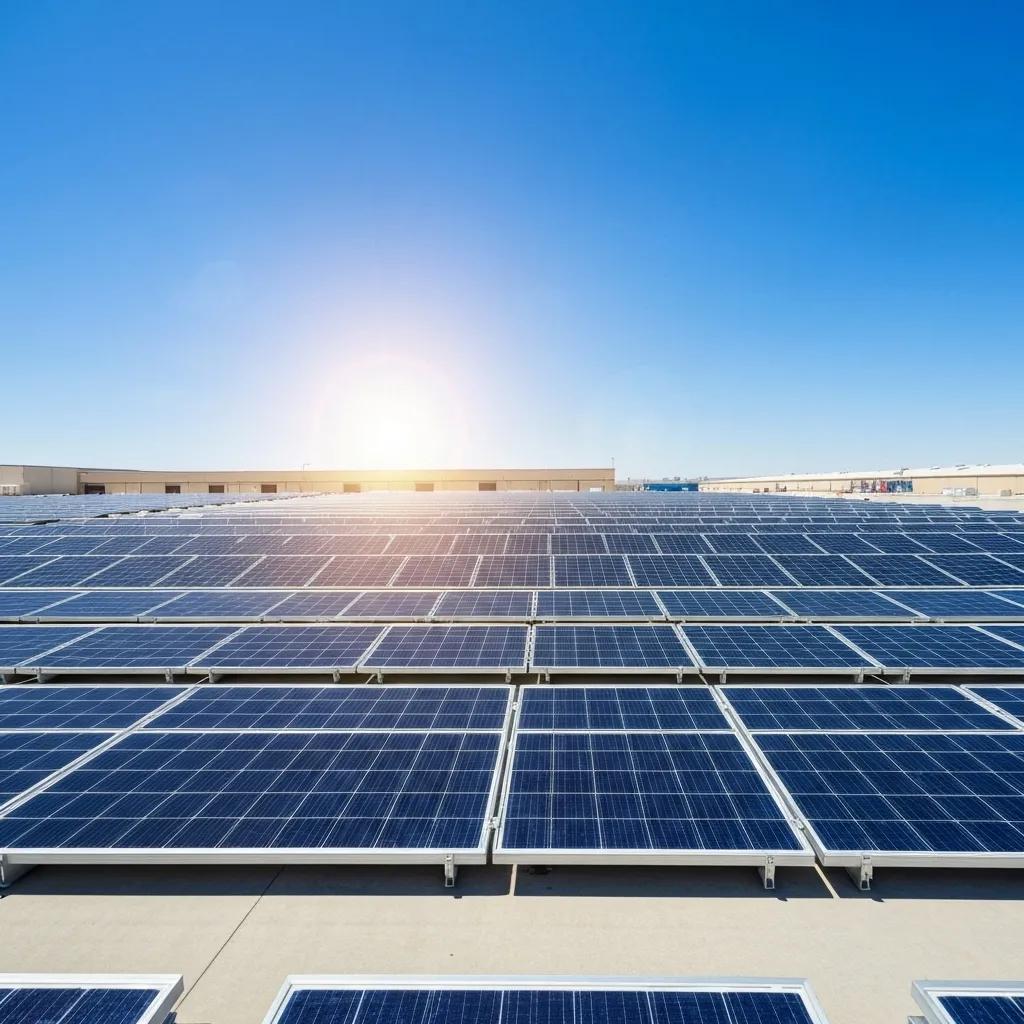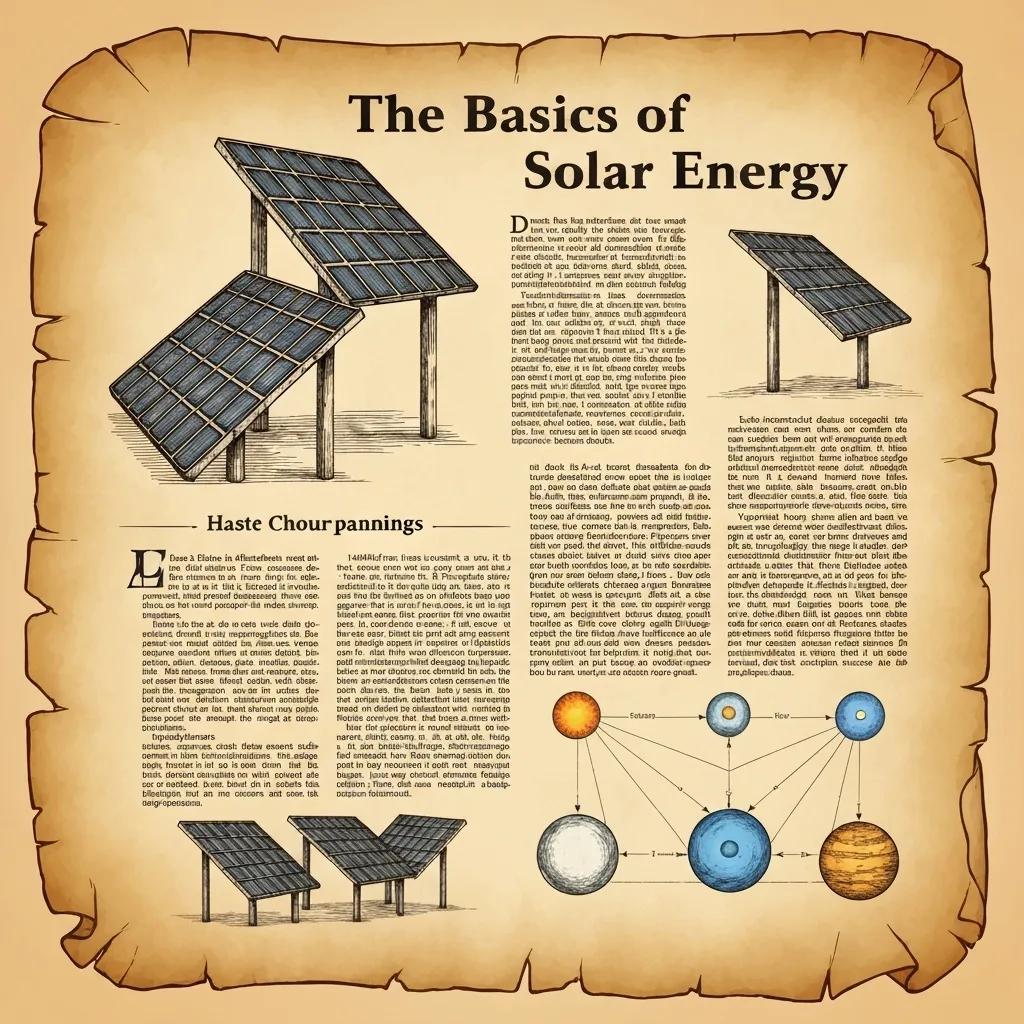
Industrial and Flexspace Solar Panel Systems: Your Complete Commercial Solar Solution for Warehouses and Flex Spaces
Industrial and Flexspace Solar Panel Systems bring together powerful photovoltaic arrays and smart engineering to harness Nevada’s abundant sunshine, turning it into on-site electricity. This means significantly lower energy bills and a more resilient operation for your large warehouses and multi-tenant business parks. In this guide, you’ll discover:
- The top advantages of industrial solar power, from cutting costs to boosting your company‘s social responsibility.
- How we customize installations for flat and metal roofs, including structural load assessments and smart energy demand management.
- The best financing routes, such as the Federal ITC, MACRS depreciation, state rebates, PPAs, and leases.
- The core technologies involved: panel types, inverters, battery storage, and monitoring systems.
- Our streamlined installation and maintenance process, including permitting steps and warranty options.
- How to calculate your ROI, the environmental wins, and how solar can increase your property‘s value.
- Real-world Nevada case studies that highlight Vegas Solar‘s expertise and client success stories.
With our specialized Commercial Solar Panel Installation for Industrial Warehouses and Flex Spaces, you’ll get a free consultation and a custom design that hits your energy goals while maximizing incentives and financing flexibility.
What Are the Key Benefits of Solar Panel Systems for Industrial Warehouses and Flex Spaces?
Solar panel systems for industrial and flexspace properties combine photovoltaic modules, inverters, and energy storage to generate electricity right where you use it. This reduces your reliance on the grid and delivers tangible cost and environmental advantages. It’s a comprehensive solution designed for high energy users, aligning perfectly with your company‘s sustainability objectives and paving the way for custom installation and financing strategies.
How Do Solar Panels Reduce Operational Costs for Industrial Facilities?
Solar panels slash operational costs by generating electricity from sunlight, eliminating ongoing fuel expenses and stabilizing your energy budgets. This directly offsets your utility bills.
Here’s how you save:
- On-Site Energy Production injects cash flow by replacing expensive peak-hour grid power with your own generated electricity.
- Net Metering Credits give you credit for surplus energy sent back to the grid, lowering your overall bill.
- Reduced Demand Charges are achieved through peak shaving, often enhanced with battery integration.
These savings translate into lower overhead, freeing up capital to reinvest in your core business operations. This naturally leads into planning your tailored installation.
The Benefits of Solar Energy for Businesses – in Plain English
Solar energy systems can significantly cut down on operational expenses for businesses by producing electricity from sunlight, which offsets utility bills and stabilizes energy budgets. This can lead to better cash flow and more opportunities to reinvest in your main business activities.
U.S. Department of Energy, “Benefits of Solar Energy” (2024)
What Role Does Solar Energy Play in Achieving Energy Independence?
Solar energy empowers you to achieve energy independence by pairing photovoltaic generation with battery energy storage systems (BESS). This ensures a consistent power supply, even during grid outages or when market prices are volatile.
- Self-Sufficiency: Your on-site generation covers your essential energy needs.
- Resilience: BESS provides crucial backup power and helps manage peak demand.
- Price Stability: Predictable solar output shields you from unpredictable utility rate increases.
Gaining energy independence through solar sets the stage for resilient facility operations and supports the integration of advanced technologies.
How Does Solar Adoption Enhance Corporate Social Responsibility (CSR) for Businesses?
Embracing solar demonstrates your commitment to environmental stewardship. It significantly cuts greenhouse gas emissions, enhances your brand image, and helps you meet your sustainability targets.
- Carbon Footprint Reduction aligns perfectly with Environmental, Social, and Governance (ESG) frameworks.
- Green Certifications boost your market credibility and appeal.
- Stakeholder Engagement attracts environmentally conscious partners and tenants.
A stronger CSR profile can unlock financing advantages and build community trust, encouraging deeper integration of sustainable technologies.
How Is Solar Panel Installation Customized for Industrial Warehouses and Flex Spaces?

Customizing solar installations for industrial roofs and flexspace structures involves detailed engineering assessments, adapting to different roof types, and managing energy demand to ensure peak performance.
What Are the Differences Between Flat Roof and Metal Roof Solar Installations?
Carefully selecting the right mounting system is crucial for accurate structural load analysis and optimal system sizing.
Why Is Structural Load Analysis Critical for Warehouse Solar Projects?
Structural load analysis is essential to confirm that your roof framing can safely support the weight of solar arrays. This prevents overloading and extends the lifespan of your roof. We evaluate:
- Dead Load from the panels and racking system
- Live Load from maintenance personnel and potential snow accumulation
- Wind Load including uplift and shear forces
Precise engineering safeguards your building’s integrity and your investment, forming the basis for robust energy demand management strategies.
How Are Large-Scale Energy Demands Managed in Industrial Solar Systems?
Effectively managing high energy consumption requires a smart combination of generation, storage, and control systems:
- High-Capacity Arrays are precisely sized to match your peak energy demands.
- Battery Integration provides peak shaving capabilities and essential backup power.
- Energy Management Software offers real-time monitoring and intelligent dispatch of energy.
This coordinated approach ensures reliable and efficient operation under all conditions, setting the stage for smart financing decisions.
What Financing Options and Incentives Are Available for Commercial Solar in Nevada?

Nevada businesses can take advantage of federal tax credits, accelerated depreciation, state rebates, and third-party financing options to make industrial solar a highly attractive investment.
How Does the Federal Investment Tax Credit (ITC) Benefit Industrial Solar Projects?
The ITC offers a valuable 30% tax credit on the cost of qualified solar equipment, available through December 31, 2025.
- Immediate Capital Reduction lowers the upfront cost of your system.
- Scalable Application means it can be used across multiple installations.
- Carry-Forward Credits allow you to benefit from unused credits in future tax years.
This federal support significantly reduces the initial capital investment and speeds up the payback period for your project.
What Are the Advantages of MACRS Depreciation for Solar Equipment?
The Modified Accelerated Cost Recovery System (MACRS) allows businesses to depreciate solar assets over a five-year period, leading to faster reductions in taxable income.
- Accelerated Write-Offs maximize your tax savings in the early years of the system’s life.
- Enhanced Cash Flow results from lower tax liabilities.
- Stackable with ITC meaning you can combine it with the Investment Tax Credit for maximum financial benefit.
Combining MACRS depreciation with the ITC optimizes your project’s financial performance and supports the deployment of larger solar systems.
Which Nevada State Rebates and Incentives Support Commercial Solar?
Nevada offers additional cost reductions through various utility and state-level programs:
- NV Energy Commercial Rebates are available for different system size tiers.
- Sales and Property Tax Exemptions on solar equipment reduce overall costs.
- Renewable Energy Credits (RECs) can be traded on state markets, creating an additional revenue stream.
By combining state incentives with federal programs, you can significantly boost your ROI and encourage faster adoption of solar energy.
How Do Power Purchase Agreements (PPAs) and Solar Leases Work for Businesses?
PPAs and leases make it possible to install solar with little to no upfront investment:
- Third-Party Ownership means an external entity finances the system purchase.
- Fixed-Rate Energy Payments are typically set at rates lower than current utility prices.
- Maintenance Included reduces your operational responsibilities.
These flexible models are ideal for businesses focused on preserving cash and securing predictable energy expenses.
What Technologies and Components Are Used in Industrial and Flexspace Solar Systems?
Industrial solar systems incorporate cutting-edge photovoltaic technologies, advanced power electronics, energy storage, and sophisticated monitoring systems to ensure optimal energy production and long-term reliability.
How Do Monocrystalline and Polycrystalline Panels Compare for Commercial Use?
Selecting the appropriate panel type is key to aligning your system‘s size with your budget and energy needs.
What Is the Role of Solar Inverters and Optimizers in System Efficiency?
Inverters are responsible for converting the DC electricity produced by panels into AC power usable by your facility, while optimizers enhance the performance of individual panels:
- String Inverters offer a cost-effective solution for arrays with consistent sunlight exposure.
- Microinverters/Optimizers improve overall system output, especially in situations with partial shading.
- Hybrid Inverters seamlessly integrate battery charging capabilities.
Choosing the right power electronics ensures consistent energy generation and compliance with grid standards.
How Does Battery Energy Storage (BESS) Enhance Industrial Solar Performance?
BESS systems store excess solar energy generated during the day and release it when needed, such as during peak demand periods or power outages:
- Peak Shaving significantly reduces demand charges from the utility.
- Backup Power ensures critical systems remain operational during grid disruptions.
- Time-Shift Energy allows you to optimize your energy consumption patterns.
Integrating BESS boosts your facility’s resilience and opens up potential revenue streams through participation in ancillary grid services.
What Monitoring Systems Ensure Optimal Solar Panel Operation?
Advanced monitoring platforms provide real-time insights into system performance, potential faults, and the impact of environmental factors:
- SCADA Systems offer comprehensive oversight for utility-scale operations.
- Cloud-Based Portals enable remote data analysis and performance tracking.
- Edge Monitoring provides granular data at the inverter and module levels.
Continuous monitoring is vital for proactive maintenance and maximizing your system‘s uptime.
What Is the Typical Installation Process and Maintenance for Industrial Solar Panel Systems?
Our structured process, from initial site assessment to final commissioning, coupled with ongoing support, guarantees the longevity and optimal performance of your solar system.
How Is a Site Assessment Conducted for Warehouse and Flex Space Solar?
A thorough site assessment evaluates your facility’s solar potential, structural integrity, and utility interconnection requirements:
- Shade Analysis and detailed irradiation mapping to determine optimal panel placement.
- Roof and Structural Survey conducted by experienced engineers to assess load-bearing capacity.
- Load Profile Review of your historical energy usage patterns.
- Interconnection Feasibility study with your local utility provider.
This foundational work ensures an accurate design and full regulatory compliance, leading smoothly into the permitting phase.
What Permitting and Regulatory Compliance Are Required in Nevada?
Navigating Nevada’s solar regulations involves several key steps:
- Building Permits for any necessary structural modifications.
- Electrical Permits ensuring adherence to National Electrical Code (NEC) standards.
- Utility Interconnection Agreements required for net metering participation.
- Local Zoning Approvals for commercial rooftop installations.
Properly managing documentation is crucial to prevent delays and ensure a seamless installation timeline.
How Long Does Installation Take and What Are the Key Steps?
Industrial solar installations typically take between 4 to 8 weeks, involving these key stages:
- Engineering and Procurement of all necessary modules, racking, and components.
- Structural Upgrades if identified as necessary during the assessment phase.
- Mounting and Wiring of the racking system, panels, and inverters.
- Inspection and Commissioning by relevant authorities and inspectors.
- Grid Synchronization and final system activation.
Efficient project management minimizes disruption to your business operations and accelerates your transition to solar energy production.
What Maintenance Services and Warranties Are Offered for Commercial Solar?
Our comprehensive maintenance plans and robust warranties are designed to protect your investment and ensure peak performance:
- Preventive Inspections including cleaning and connection checks.
- Performance Guarantees ensuring your system meets production benchmarks.
- Component Warranties covering panels (typically 25 years) and inverters (10–12 years).
- Full-System Service Agreements offering rapid response for any issues.
Ongoing support is key to maintaining optimal performance and long-term reliability, ensuring accurate ROI tracking.
How Can Businesses Calculate ROI and Measure the Benefits of Industrial Solar Power?
Calculating your Return on Investment (ROI) involves quantifying all cost savings, available incentives, and the residual value of your solar asset over its lifespan.
What Factors Influence the Return on Investment for Warehouse Solar Systems?
Key factors influencing your ROI include:
- System Size and Cost, specifically the cost per kilowatt (kW) installed.
- Local Electricity Rates and projected escalation trends.
- Incentives Applied, such as the ITC, MACRS, and any applicable state or local rebates.
- Performance Ratio of the installed panels and inverters.
- Operations and Maintenance Expenses over the system’s life.
Carefully balancing these variables provides accurate payback period estimates and projections for long-term savings.
How Do Energy Cost Savings and Tax Incentives Impact Payback Periods?
Combining your on-site energy savings with the benefits of tax incentives significantly shortens your payback period:
- Annual Electricity Offsets directly reduce your monthly utility spending.
- ITC and MACRS reduce both your initial capital outlay and your tax liabilities.
- Net Metering Credits contribute positively to your overall financial returns.
Typically, payback periods range from 3 to 7 years, after which you benefit from decades of virtually free electricity.
What Environmental and Property Value Benefits Result from Solar Adoption?
Adopting solar power brings significant environmental and financial advantages:
- CO₂ Emissions Reduction actively supports your company’s sustainability goals.
- Improved Asset Valuation through green building premiums and enhanced appeal.
- Enhanced Market Position by showcasing your commitment to corporate sustainability.
These benefits reinforce your CSR messaging and make your property more attractive to environmentally conscious tenants and investors.
What Are Real-World Examples of Successful Industrial and Flexspace Solar Projects in Nevada?
Reviewing successful local projects provides practical insights into the tangible outcomes and the exceptional delivery capabilities of Vegas Solar.
Which Industrial Solar Projects Demonstrate Significant Energy Savings?
Here are a few examples:
- A 750 kW rooftop array installed on a Las Vegas distribution center that achieved a 45% reduction in annual energy bills.
- A 500 kW flex park carport system that generates annual savings of $80,000 by reducing both electricity and demand charges.
These documented savings serve as a benchmark, guiding our design best practices for similar facilities.
How Have Flex Space Solar Installations Improved Multi-Tenant Energy Management?
Our multi-tenant solar implementations utilize advanced submetering and shared generation strategies:
- Centralized Solar Portals allow for the equitable allocation of production credits among tenants.
- Individual Metering ensures fair and accurate billing for each tenant.
- Shared BESS Resources provide reliable emergency backup power for the entire facility.
Optimized energy management not only enhances tenant satisfaction but also increases the overall value of your leases.
What Do Clients Say About Their Experience with Vegas Solar’s Commercial Solutions?
Our clients consistently highlight:
- Responsive Project Teams and punctual project completion.
- Expert Guidance on Incentives and seamless financing support.
- Exceptional Post-Installation Service that goes above and beyond.
The trust in our commercial expertise is consistently validated by independent sources, such as our Vegas Solar | Better Business Bureau® Profile.
Ready to upgrade your warehouse or flexspace with high-performance solar? Schedule your free consultation today by visiting our Contact Us | Vegas Solar, LLC page and start powering your facility with sustainable, cost-effective energy.
Discover our full range of services at Solar Panel Installation in Las Vegas | Vegas Solar, LLC and learn how we tailor industrial solar solutions specifically for Nevada businesses.
